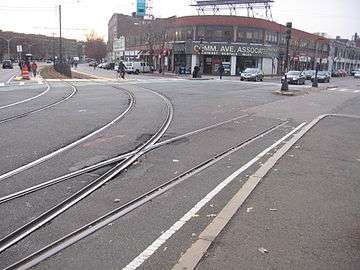Taxpayer (building)
In real estate, urban planning, and especially firefighting, a taxpayer refers to a small one or two story building built to cover the owner's annual property tax assessed for owning a parcel of land.[1] They are usually constructed with the hope that they can soon be redeveloped into a larger building capable of generating more revenue, or simply to hold a parcel of land along a new road or especially a streetcar line while waiting for value to appreciate. The building style was generally replaced with strip malls as the automobile became dominant in the mid 20th Century.[2]

History
In the wake of the Great Depression, taxpayers proliferated across New York City, ending the period of high-rise buildings; while just 7 percent of building plans filed in 1929 for the busy 3rd, Lexington, and Madison Avenues were for one- to three-story buildings, every plan was for such a building by 1933. Despite being intended as temporary buildings, many survived for a half-century or more.[3]
Hazards
Taxpayer buildings are criticized for being poorly or cheaply built, but allow a developer to stay in business while they wait for more favorable conditions. A fire in a taxpayer is a special hazard in firefighting. The poor quality construction often burns readily, and the architecture tends to encourage backdrafts.[1] Many have been renovated several times over and have concealed or undocumented voids.[2] More modern taxpayers were built with fire-resistant materials and are less of a hazard.
See also
References
- "SOP Fires in Taxpayers" (PDF). www.firesops.com. Archived from the original (PDF) on 2016-03-04. Retrieved 2015-04-22.
- "Taxpayers and Strip Malls: Construction and Tactics". www.fireengineering.com. Retrieved 2015-04-23.
- Gray, Christopher (August 29, 2004). "STREETSCAPES/Manhattan—From Deep in the Depression, Three Low-Rise Corners". The New York Times. Archived from the original on May 28, 2015. Retrieved July 16, 2019.